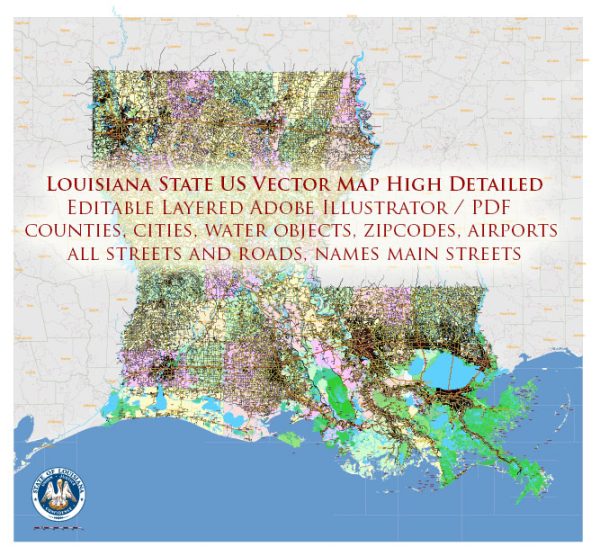General overview of Louisiana’s maritime and air transportation systems.
Maritime Transportation:
- Port of New Orleans: The Port of New Orleans is a crucial maritime gateway, serving as a major hub for the transportation of goods along the Mississippi River and connecting to the Gulf of Mexico. It handles a diverse range of cargoes, including containerized goods, steel, chemicals, and agricultural products.
- Port of South Louisiana: This port is one of the largest tonnage ports in the United States. It is strategically located between New Orleans and Baton Rouge along the Mississippi River and serves as a vital link for the transportation of commodities such as grain, petrochemicals, and steel.
- Mississippi River System: Louisiana is part of the extensive Mississippi River System, allowing for inland waterway transportation. Barge traffic on the river plays a significant role in the movement of goods within the state and to other parts of the country.
- Oil and Gas Industry: Louisiana’s coastline hosts numerous oil and gas facilities and supports offshore drilling activities in the Gulf of Mexico. This sector heavily relies on maritime transportation for the movement of personnel, equipment, and resources.
Air Transportation:
- Louis Armstrong New Orleans International Airport (MSY): Located in Kenner, just west of downtown New Orleans, MSY is the primary commercial airport serving the state. It offers a wide range of domestic and some international flights, connecting Louisiana to major cities around the world.
- Baton Rouge Metropolitan Airport (BTR): Serving the capital city, Baton Rouge, this airport provides domestic flights and plays a crucial role in supporting the business and industrial activities in the region.
- Shreveport Regional Airport (SHV) and Lafayette Regional Airport (LFT): These airports serve the northern and southwestern regions of the state, respectively, offering domestic flights and contributing to regional connectivity.
- General Aviation: Louisiana has numerous general aviation airports that support private and smaller aircraft. These facilities contribute to local transportation needs, business travel, and emergency services.


 Author: Kirill Shrayber, Ph.D.
Author: Kirill Shrayber, Ph.D.